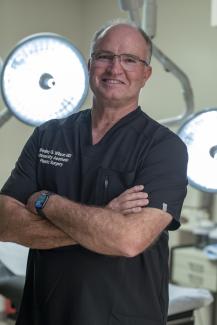Ear surgery, or otoplasty, is done to set prominent ears back closer to the head or reduce large ears' size. Otoplasty is among the specialties of board-certified Dr. Wesley G. Wilson.
Protruding ears can be a source of mental and emotional stress. Ears are almost fully grown by age five, and the earlier the surgery, the less teasing, and ridicule an individual will have to endure. However, most patients do better when they can understand the reason for ear surgery, therefore having a greater appreciation for the results obtained. Otoplasty is not just a surgery for children; anyone who feels self-conscious about their ears can benefit.
What is Otoplasty?
Ear surgery, or otoplasty, is usually done to set prominent ears back closer to the head or to reduce the size of large ears. If performed to correct protruding ears, the procedure is sometimes known as “ear pinning.”
Otoplasty Benefits
Otoplasty is worth considering if you are troubled by protruding ears. Perhaps you think your ears are the wrong size. Some people are dealing with congenital disabilities or injuries that have resulted in misshapen ears. Others may be dissatisfied with previous cosmetic ear surgery and wish to correct it. Children are often particularly self-conscious about their ears. For many, otoplasty can be a life-changing procedure.
Preparing for Otoplasty
In otoplasty, the ears are positioned closer to the head by reshaping the ear cartilage. Dr. Wilson accomplishes this through incisions placed behind the ears to conceal scars in a natural skin crease. Otoplasty will not change the location of your ears or impact your hearing in any way. Dr. Wilson will meticulously review your medical history or that of your child. The doctor will likely take “before” pictures to help achieve your surgical goals. Patients who smoke will have to stop for a specified period before and after surgery. You will also likely be directed to suspend the use of any supplement or medication (such as aspirin) that may elevate bleeding.
Otoplasty Procedure
Otoplasty can be performed in a hospital or outpatient facility. While sedation and local anesthesia are sometimes sufficient, general anesthesia may be preferred, especially for children. Surgery generally takes about two hours. Excess ear skin is often removed, and the surgeon will mold ear cartilage into the desired position before securing the corrected tissues with internal and external stitches. Patients can go home on the day of their surgery.
Otoplasty Recovery
Your doctor will prescribe any needed pain medication as appropriate. Bandages are removed in a matter of a few days, and your doctor will take out your stitches within two weeks. A head band should be worn for three weeks postoperatively to protect the ears and prevent pulling on internal sutures. It’s important not to sleep on your side or put any pressure on your ears for a period of time specified by your doctor. Most patients can go back to work or school in a week or less.

Otoplasty Results
The changes in appearance will be evident as soon as your bandages are removed. Schedule your Otoplasty consultations with Dr. Wilson today
Our ears can be a significant component of our appearance. Otoplasty can often restore a patient’s self-confidence and outlook on life. Children may particularly benefit. Dr. Wesley G. Wilson is board-certified and among the most highly trained and experienced otoplasty surgeons in the country.


